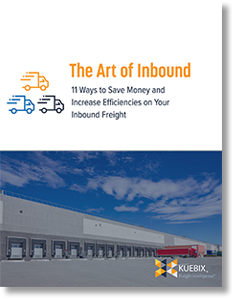Implementing a Transporation Management System
The combination of the capacity crunch and new government regulations are causing transportation costs to soar - and are expected to continue this trend into the future.
In today’s market, shipping is one of the biggest expenses for any shipper, growing at a rate of over 5% per year, depending on the lane.
Implementing a Transporation Management System (TMS) solution can bring a business the freight savings and intelligence they need to keep transport costs as low as possible.
Related: What Is A Transportation Management System?
A broad range of TMSs exist, ranging from cloud-based to on-premise, automating freight bill audit and pay, streamlining execution and optimization, integrating with disparate systems, analyzing data for performance monitoring, and on and on.
With all these features and options, how does a company go about buying a TMS system?
First of all, the goals for deploying a TMS need to be determined – is the goal to cut shipping costs, improve customer service, become a preferred shipper, consolidate loads, etc.? Do these goals align with the corporate strategy? They should!
Next, make sure that the TMS is easily scalable to meet current business needs and those of the future.
Additional features and functions should be able to be easily added without having to start from scratch.
A spot market should be accessible for volume quotes and the system should also easily integrate with other software to extend the value of the technology.
A TMS should offer the following:
- Automatic rating, booking and tracking of shipments, managing carriers and communicating with shippers and customers in real-time
- A network of carriers incorporating all modes with the ability to consolidate and optimize shipments
- A wide variety of reports and dashboards to monitor cost, shipping status and service levels
- Management of the carrier bid process from initial set up to tendering of shipments
- Extensive analytics to manage performance in real-time
- A quick implementation time and return-on-investment (ROI)
- Integration with enterprise systems and 3rd party applications
- The ability to track and trace any shipment in real-time, anywhere in the supply chain
- The ability to easily add functionality as needed such as order and route optimization, dock scheduling, yard management and container tracking
Some TMS providers like Kuebix offer a free version of their technology to help shippers better understand how to use the system and see real results from their operations risk-free.
Unlike a demo, Kuebix Free Shipper gets shippers managing their freight and gaining true ROI even before adding modular features and capabilities.
When looking for a new TMS, check out The Complete Buyer’s Guide to Transportation Management Systems to get answers to questions like what to look for and how much a TMS should cost before committing to a system.
Related White Papers & eBooks
The Complete Buyer’s Guide to Transportation Management Systems
There is almost no limit to how a Transportation Management System can benefit your unique supply chain, but the key to success is finding the right one for your goals, so, before selecting a TMS, use the 12 questions in this buyer’s guide to find the best solution for your company. Download Now!
The Art of the Inbound: 11 Ways to Improve Your Inbound Shipping Operations
This ebook provides a guide to benchmark your company against best practices in the transportation and shipping industry and helps to put together a strategic approach to capitalizing on the opportunities to manage the “art of the inbound.” Download Now!
More Resources from Kuebix
Article topics
Email Sign Up



















